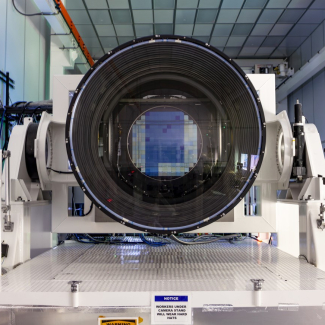
Jupiter’s Great Red Spot shrinking in size but not in thickness
Jupiter, the largest planet in the Solar System, is mainly made up of liquids and gases. Its clouds are shaped by jet streams, winds and vortices into numerous parallel bands, as well as coloured patches, one of which clearly stands out: the Great Red Spot. This is an Earth-sized anticyclone that has been observed for over 350 years. but has suddenly decreased in size in recent years.
The cloud layer is extremely opaque, making it hard to observe at deeper levels. However, using laboratory experiments, analyses and numerical simulations, scientists at the Institut de Recherche sur les Phénomènes Hors Equilibre (Institute for Research on Non-Equilibrium Processes) (CNRS/Aix-Marseille Université/Ecole Centrale de Marseille) studied the dynamics of large vortices and determined the universal balance of forces that creates them. Their model is thus able to predict the thickness of the Great Red Spot, which has remained remarkably constant over time despite the reduction in its surface area. The results are published in Nature Physics on 16 March 2020, and will shortly be compared with upcoming observations by NASA’s Juno spacecraft, launched in 2011.
Remote determination of the shape of Jupiter’s vortices from laboratory experiments, Nature Physics, 16 March 2020, DOI : 10.1038/s41567-020-0833-9

